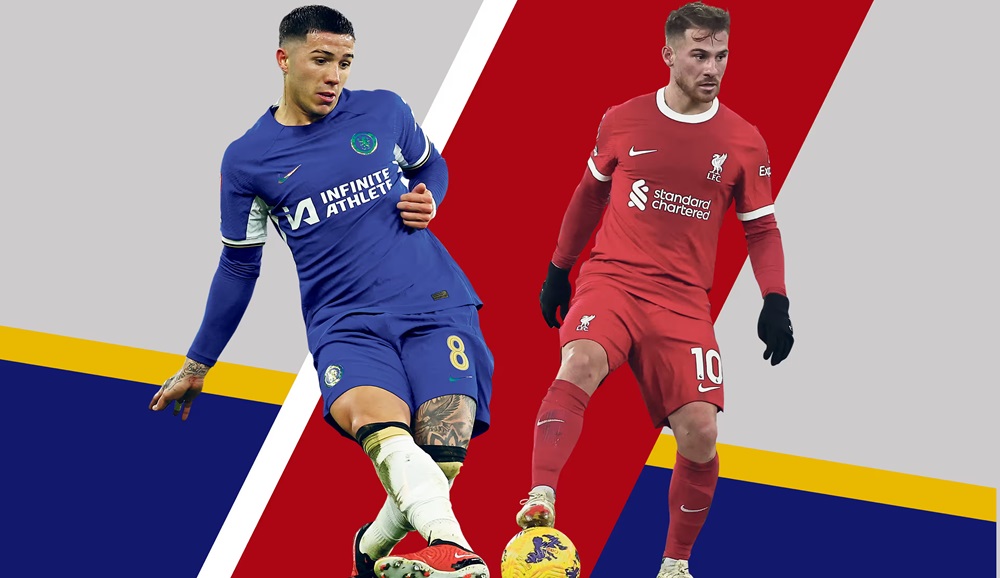So begins the long goodbye. A chance for fans to express their appreciation for a man who everyone knows will not be in the job for very much longer; a chance to reward a celebrated coach with a valedictory trophy and a clutch of sacred memories. Yes: it’s a huge afternoon for Mauricio Pochettino, for whom Sunday’s Carabao Cup final represents his best route to salvaging Chelsea’s season, and perhaps even his own ailing project.
Naturally, history is against him. It’s more than a decade since the final served up a genuine surprise. Every winner since 2013 has also gone on to qualify for the Champions League, which Chelsea almost certainly will not. For eight of the last 10 winners, the League Cup was not the only trophy they lifted that season. If this competition was once a chance for upstarts and underdogs to upset the established order of English football – think Oxford, Leicester, Birmingham, Swansea – these days it tends to uphold that same order, confirm what we already knew, reward the serial winners.
And so a Chelsea triumph at Wembley – after losing their last six finals there – would have a wider significance beyond silverware or European qualification, or even Pochettino’s own future. Part of the modern identity of Chelsea has been the ability to win even in adversity or dysfunction. Coaches come and go, chaos reigns, but still the pots have kept coming. Both their Champions League wins grew out of mid-season shambles. Antonio Conte pretty much burned the place down in 2018 but still emerged with an FA Cup. Not since the Roman Abramovich takeover have Chelsea gone two consecutive seasons without a trophy. But unless Pochettino can claim one of the two domestic cups, this is the fate that now awaits them.
How we got here is a question with multiple answers. And at this point it feels appropriate to make the comparison with Liverpool, whose era of success has been built in exactly the opposite fashion to Chelsea’s: stability, sustainability, a coherent plan and familiar faces and an actual budget. Even the resignation of Jürgen Klopp – potentially a seismic and shattering event – has unfolded at a sober, stately pace. Klopp first informed the club of his intentions in November and will leave in June, meaning that his departure will last about as long as Graham Potter’s entire Chelsea reign.
In the red corner, patience and process, painstaking deliberation and orderly succession. In the blue corner, disruption and disorder, constant upheaval and Nicolas Jackson. What does this look like in practice, on the pitch? Take, by way of example, Chelsea and Liverpool’s two World Cup-winning midfielders, and the way in which their new clubs have sought to integrate them.
Alexis Mac Allister was not signed by Liverpool to play at the base of midfield. Most of his success with Brighton and Argentina came in a more advanced role, either as a No 10 or as one of the two attacking No 8s. But with Fabinho and Jordan Henderson leaving in the summer, and Chelsea beating them to the signings of Roméo Lavia and Moisés Caicedo, Mac Allister began the season in a deeper role. “It was clearly not the [original] idea,” Mac Allister said recently. “But we didn’t have a proper No 6, so I had to do the job.”
And it was fine. The walls did not cave in. More recently Mac Allister has moved to a role further up the pitch, where he has looked equally comfortable. “I am not sure what the natural position is for players who can really play football,” Klopp said ahead of the midweek game against Luton, where Mac Allister notched two assists. “We have to get rid of these clear structures of who is where. Alexis can play different positions. He has the tactical brain.”
By contrast, when Pochettino talks about Enzo Fernández and his developing role over the course of the season, tactical intelligence is barely mentioned. Fernández was signed for £106m last January after co-owner Todd Boehly watched him playing at the World Cup, and is already on his third Chelsea manager. During his caretaker spell at the club last season, Frank Lampard was asked how he saw Fernández’s best position. “I haven’t actually asked him that question,” Lampard admitted.
This season Pochettino has shuffled Fernández between a more withdrawn role in which he can get more touches of the ball, and a more advanced role in which he can contribute more in attack.
“The capacity to move, to run, I think is improving a lot,” Pochettino said this week. “He is improving a lot, his capacity to move on the pitch. He is a player with the capacity to be box-to-box, he has the capacity to score goals because of the technique he has.”
Here, then, we have Mac Allister freely switching positions, but by design, and with Klopp essentially trusting him to work things out on the pitch. And we have Enzo freely switching positions, but for reasons that are never made entirely clear, and which seem to relate more to his engine and his ability to cover ground. On the pitch the effect may be largely similar. But only one of these approaches is actually geared towards player development, towards encouraging the player to think of himself as a decision-maker rather than a unit of labour.
None of which, on its own, tells us anything about how 90 minutes of football on Sunday will pan out. This is the foundational truth of Boehlyball: assemble enough expensive talent in one place, point it vaguely in the right direction and occasionally the pieces will align and make you look like a genius. And when it does, it will look largely indistinguishable from a cogent and meticulous decade-long plan. This is the anti-ideology that has essentially sustained Chelsea for more than two decades, and may yet carry them to victory here. After all, once you’re standing on the winners’ rostrum, nobody really cares whether you got there intentionally or by accident.










More Stories
Amorim insists Fernandes not leaving Manchester United amid Madrid reports
How debt burden pushed Nigerian boxer Segun Olanrewaju to a fight that took his life
Nigeria Taekwondo Federation boss, Abdullahi Saidu dies at 53